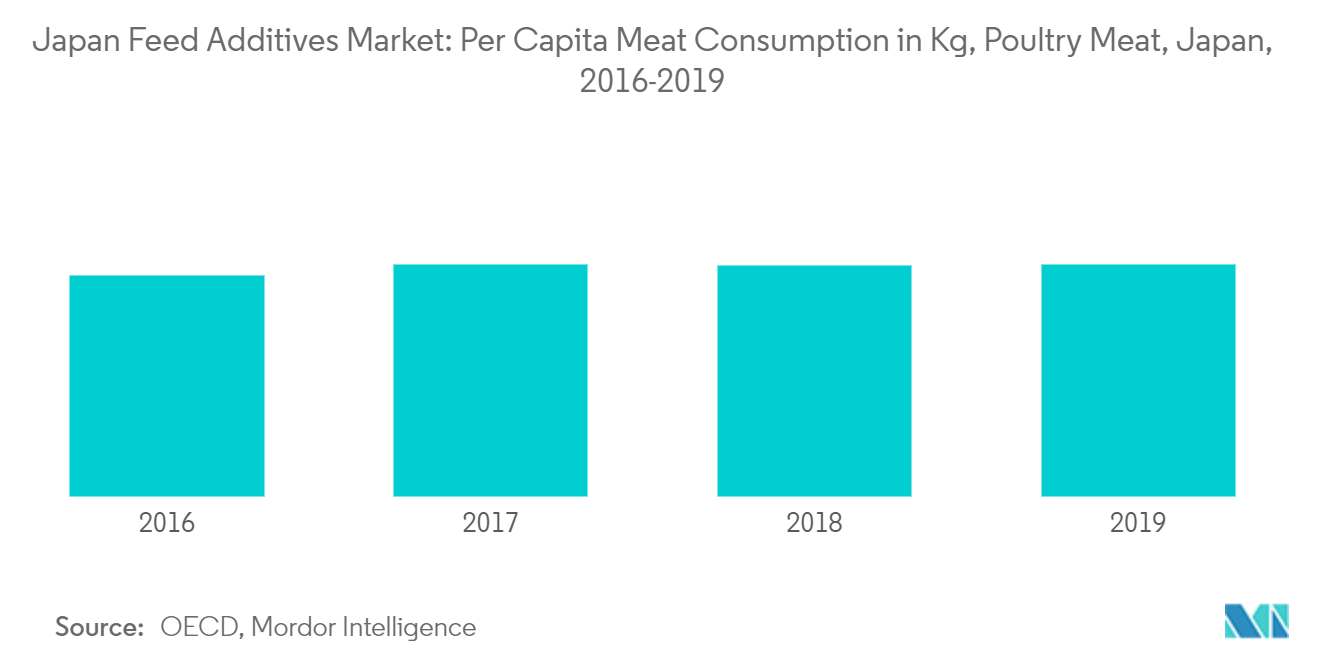Market Trends of Japan Feed Additives Industry
Shift in Consumer Preference Towards Meat and Animal Sourced Products
Japan has experienced the most dramatic shifts in the dietary preferences of its citizens during the past few years. This is due to a bag of factors with urbanization, rising incomes, changes in food supply chains. According to the Organisation for Economic Co-operation and Development (OECD) poultry and pork meat are the highest consumed in Japan. In 2019 Per capita consumption of poultry meat was 17 kg and 16.2 Kg of pork meat. In order to meet the demand, meat and milk producers tend to provide quality feed to the animals so as to meet the necessary diet requirements and enhance the animal yield. Owing to increasing meat consumption, meat production is increasing. According to the Food and Agriculture Organization (FAO), in 2016 poultry bird population was 310130 thousand heads and has increased in 2018 with a population count of 323128 thousand heads. The growing production creates an opportunity for the feed additives market as animal health has become a serious concern.

Poultry Segment Dominates the Market
In Japan, the poultry sector leads the feed additives market, holding a 42.7% value share, followed by ruminants at 32% in 2022. The cost-benefit ratio of using additives is projected to economize the cattle industry, aiding market expansion. Chicken is integral to Japanese cuisine and featured in dishes like yakitori, karaage, and teriyaki chicken, and is in high demand. This demand boost requires more poultry production, which in turn drives the need for poultry-specific feed additives. Poultry farming is economically favorable, with faster returns on investment than other livestock due to chickens' shorter lifecycles and rapid growth rates. This encourages farmers to go with poultry farming, increasing the demand for feed additives that improve the birds' growth, health, and productivity. The poultry industry has adopted advanced feed additives to enhance production. Additives such as probiotics, prebiotics, enzymes, and vitamins are crucial in improving feed conversion, immunity, and overall health, making them essential in the industry. Additionally, Japan's strict animal health and food safety regulations necessitate the development and use of compliant poultry feed additives.


